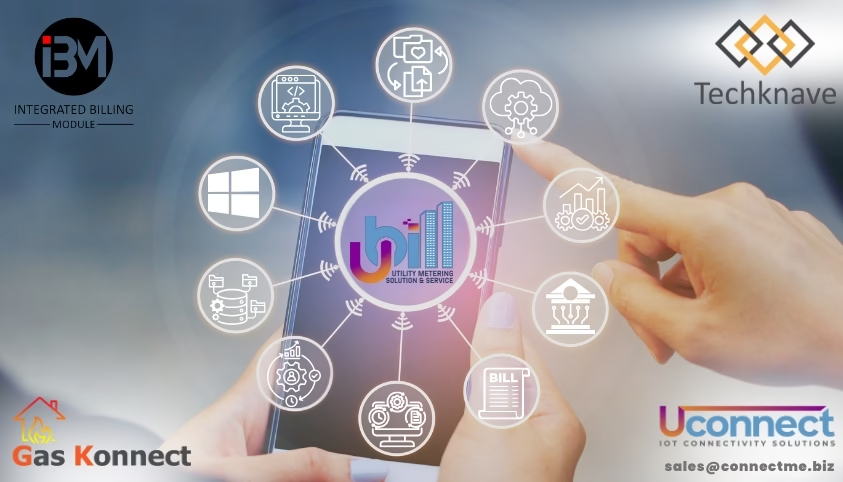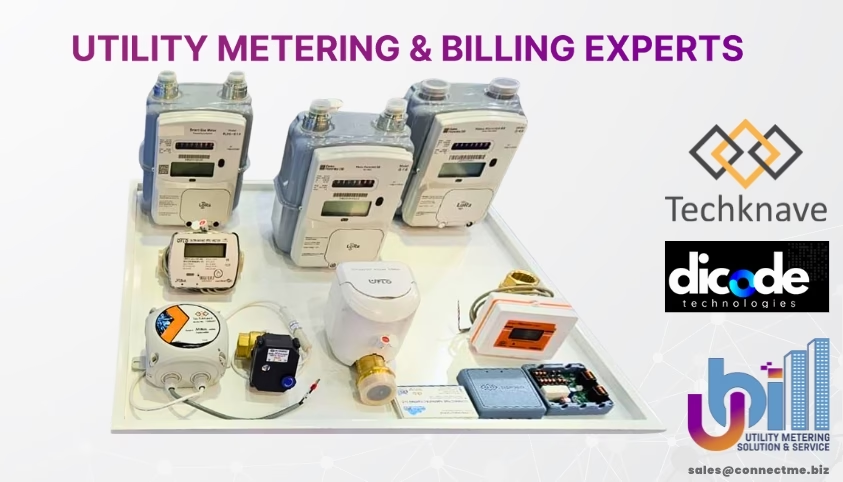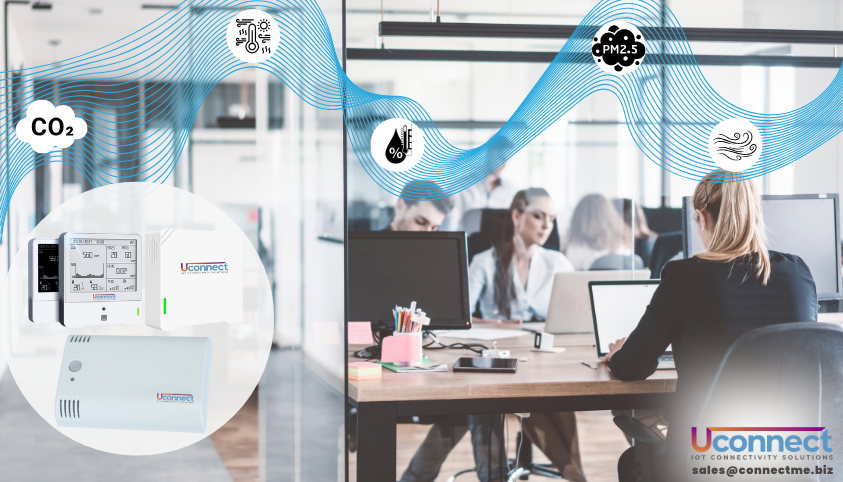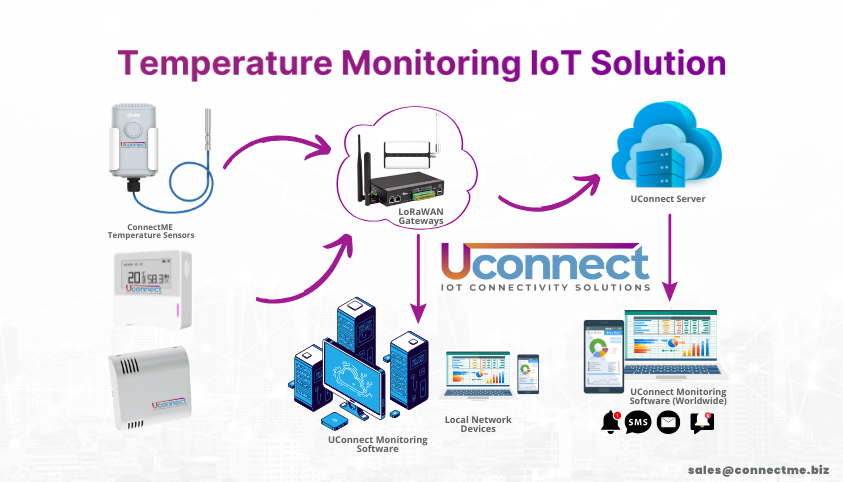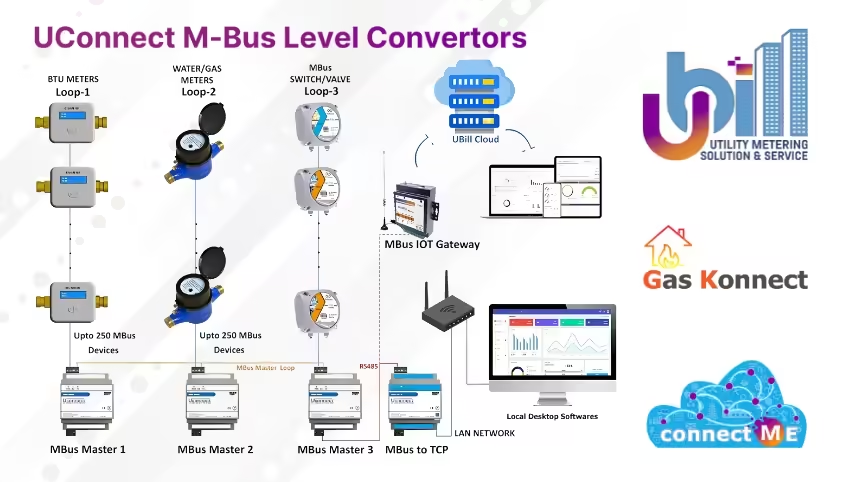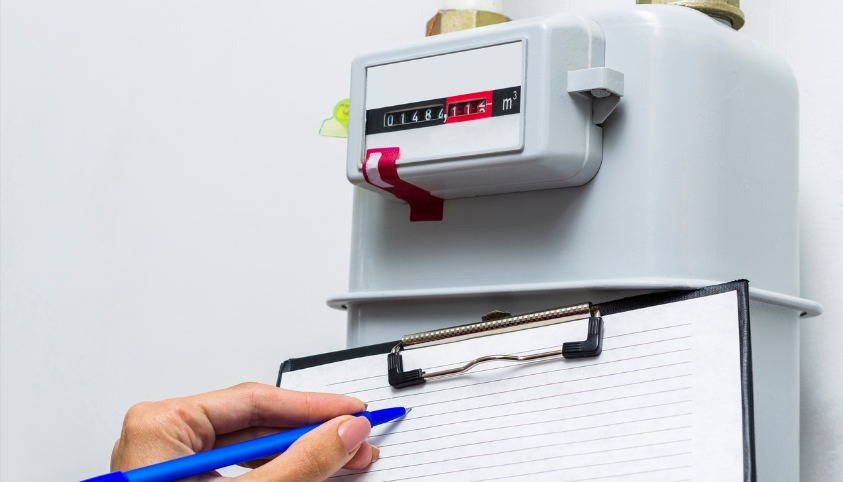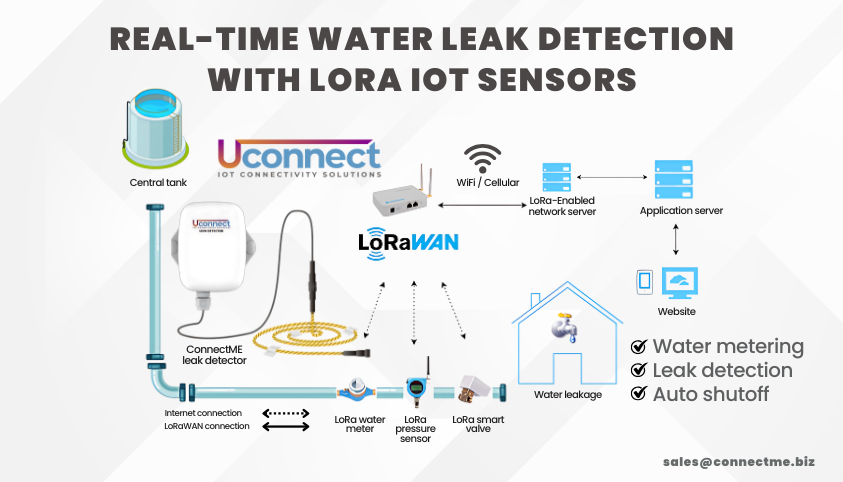
In the Gulf region with its rapid real estate development, high-rise towers, expansive commercial campuses and harsh climate — water loss and hidden leaks are a serious business risk. Beyond simply waste, leaks in mechanical rooms, basement pipe runs, chilled-water systems, risers or remote pump stations can lead to major damage, unplanned maintenance, insurance claims and reputational cost.
That’s where ConnectME’s smart water-leak detection solution comes in: by combining low-power LoRaWAN sensors with ConnectME’s gateway and alert infrastructure, facility managers can detect leaks early, act decisively and prevent disruption — all with minimal wiring or retrofit disruption. The approach suits the GCC market because of large site footprints, long pipe runs, and the need for scalable, low-maintenance solutions.
ConnectME Solutions brings an intelligent answer through its LoRaWAN-based Smart Water Leak Detection system — a seamless fusion of precision leak detectors, long-range IoT sensors, and cloud-connected gateways. Together, they create a real-time monitoring network that detects, alerts, and prevents leaks long before they become costly disruptions. Built for the scale, speed, and sustainability goals of the GCC, this solution is redefining how utilities, property developers, and facility managers safeguard their water infrastructure.
“In the GCC, where both infrastructure scale and sustainability goals are growing rapidly, the ability to monitor and control water networks in real time is no longer optional — it’s essential. Our LoRaWAN leak-detection solutions empower businesses to achieve operational resilience, cost efficiency, and environmental responsibility all at once.”– KOTHANDAPANI (KOTHS), IIOT SPECIALIST AT CONNECTME SOLUTIONS
Why LoRaWAN is a Game-Changer for Leak Detection
LoRaWAN (Long Range Wide Area Network) technology offers a number of key advantages for leak detection in GCC settings:
- Long-range coverage and building/underground penetration – LoRaWAN sensors can communicate over hundreds of metres, even through basement pipe networks and large commercial structures.
- Low power consumption – With battery-operated sensors lasting years, maintenance is minimal. This is ideal for remote drip pans, underfloor pipe runs and inaccessible risers.
- Flexible retrofit deployment – Because the sensors are wireless, you don’t need to re-wire or disrupt existing infrastructure widely.
- Scalability – You can deploy many leak detectors across large areas (multi-tower complexes, malls, hotels) and connect them to one gateway/back-end.
For GCC applications — where complex buildings, remote mechanical rooms and buried/overhead pipe-runs are common — these features make LoRaWAN especially suitable.
ConnectME’s Solution Architecture: Leak Detectors + Gateways + Platform
Here’s how ConnectME combines hardware, communications and software to deliver a full leak-detection system:
- Leak Detection Sensors
ConnectME works with (or uses) IoT sensors designed to detect the presence of unwanted water (or moisture) at a point or along a rope/cable length. These sensors are placed in key locations such as:
- Beneath riser pipe bunds or leaking joints in chilled-water networks
- Under equipment drip pans or HVAC condenser units
- Around pump stations, basement walls, or sub-floor voids When water bridges the sensing probes (or the rope sensor detects moisture along its length), the sensor generates an alert and sends a message over the network.
- Gateways and Alert Engines
ConnectME provides gateway/alert-engine devices (for example U2310A, U2320A) which act as the bridge between the sensors and cloud/monitoring systems.
- The U2310A 4G Alert Engine Gateway handles sites where wired internet/WiFi is unavailable — it uses cellular backhaul and sends data and alerts (SMS, e-mail) immediately.
- The U2320A WiFi Alert Engine Gateway works where WiFi exists (e.g., in a campus, hotel mechanical room) offering similar alerting functions. These gateways collect sensor messages (via LoRaWAN) and forward to cloud dashboards or central BMS/SCADA systems.
- Integration and Platform
Once sensor data arrives in the cloud/back-end, ConnectME’s software enables:
- Real-time dashboards showing location, status, battery health, last-seen time
- Alerts / notifications when a leak is detected or when a device reports fault/low battery
- Historical logs and analytics to show trends (e.g., repeated small leaks, moisture build-up)
- Integration with management systems (BMS, FM platforms) so facility teams can act immediately This architecture turns a municipality, campus or building network into a proactive leak-detection system rather than purely reactive.
Benefits for GCC Building Owners, Utilities & Facilities Teams
Deploying the ConnectME LoRaWAN leak-detection solution brings multiple advantages in a Gulf context:
- Reduced water damage risk – Early detection prevents floods, corrosion, structural damage and downtime.
- Lower operational cost – Fewer reactive repairs, less unplanned maintenance, reduced insurance risk.
- Minimal disruption – Wireless sensors with long battery life mean minimal wiring, low intrusiveness and fast install.
- Scalable across large estates – From single buildings to hotel portfolios, malls, campuses.
- Improved sustainability – Water is a strategic resource in the GCC; computing and acting on leaks supports ESG targets.
- Enhanced data visibility – Facility teams move from ‘detect when something breaks’ to ‘monitor continuously, act early’.
The Future of Leak Detection and ConnectME’s Role
Leak detection is no longer just a “nice-to-have” but a core component of smart infrastructure. As buildings, campuses and utilities across the Gulf adopt more sensors, analytics, dashboards and automation, ConnectME is positioned to deliver not just leak detection hardware but full ecosystem: sensor → LoRaWAN network → gateway → cloud platform → actionable insight.
We foresee:
- Expanded use of rope-type sensors (for long pipe-runs) and networked shut-off valves triggered by leak detection
- Integration with predictive maintenance: pattern analysis of repeated leak zones to forecast failure
- Larger data-aggregation: combining leak detection with flow/pressure/metering for full-water-system health monitoring
- OPEX model adoption: Wireless sensor subscriptions with cloud dashboards, minimal upfront capex
- Building-wide sensor networks where leak detection, metering, air-quality, asset tracking all share the same LoRaWAN backbone
As the GCC accelerates its smart-city and sustainability ambitions, digital water management is emerging as a cornerstone of resilient infrastructure. The synergy between ConnectME’s LoRaWAN leak detectors and IoT gateways enables organizations to transform conventional maintenance into intelligent asset management — with data-driven insights, instant alerts, and network-wide visibility.
With its proven technology and regional expertise, ConnectME Solutions stands at the forefront of this transformation — delivering smarter systems for a smarter, more sustainable GCC.
ConnectME Solutions, with its strong GCC footprint, private LoRaWAN experience, sensor-gateway-platform suite and domain knowledge in building automation and utilities, is ready to lead this transformation.
In the dynamic, high-value built environment of the Gulf — where large towers, complex services, remote mechanical systems and water-risk exposure are the norm — smart water leak detection is essential. By combining low-power LoRaWAN sensors, ConnectME gateways and alert engines, and a robust cloud/analytics platform, ConnectME Solutions enables facility owners and managers to move from reacting to leaks to detecting, alerting, analysing and proactively managing them.
If your organisation manages properties, campuses, hotels, malls or utility networks in the GCC and wants to strengthen its water-asset resilience and operational efficiency, now is the time to explore how ConnectME’s leak-detection solution can be deployed — at scale, with minimal disruption and maximum impact.
